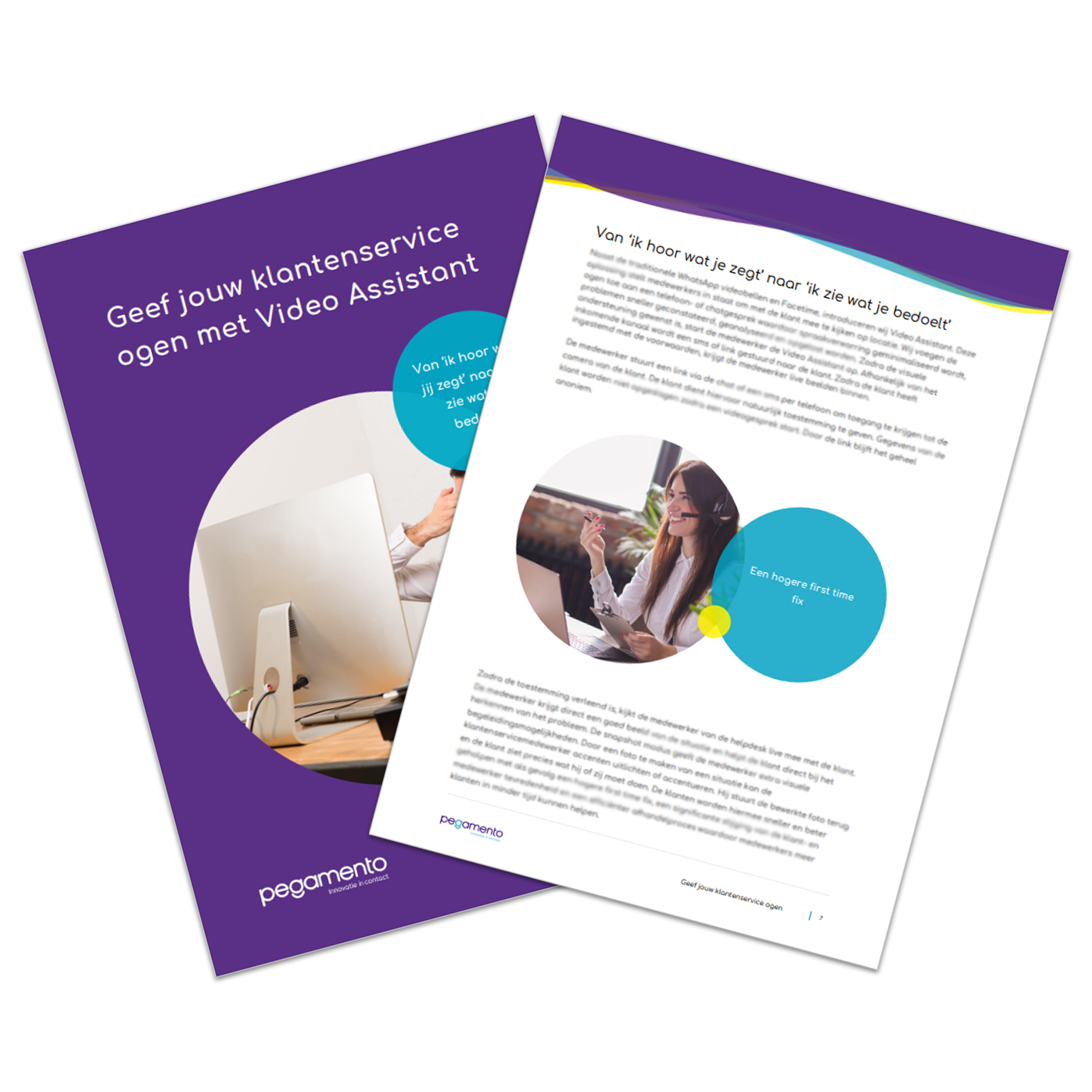Visual support from within the contact centre. Or: from ‘I hear what you're saying’ to ‘I see what you mean’. The Video Assistant is on the rise.
''Customer contact employees now sometimes feel like they are calling with a blindfold on,'' states Joost Dijkhuis from Pegamento. Dijkhuis is the creator of the Video Assistant, and Pegamento is a digital service provider that provides smart customer contact solutions to businesses. ''A customer explains what kind of central heating boiler they have or which lights on the internet router are on (or off), but often a verbal description creates noise on the line. The Video Assistant can prevent this. The customer service representative can then explain that the water pressure is too low and how the customer can adjust it, or they can explain how to reset the router.
Using video for customer contact is not new, of course, but there are many more applications than people realise. ''During corona, we saw that more and more companies started video calling, for example when holding a mortgage advice meeting or other type of advice consultation,'' says Dijkhuis. ''But with a Video Assistant, you can do much more, without the disadvantages of classic video calling.''
For instance, with Pegamento's Video Assistant, you don't have to call from a phone number, and the customer service representatives themselves do not appear on screen, as with FaceTime and WhatsApp, for example. Customers also do not need a separate app for the Video Assistant.
Intuitive and functional
So how does it work? If video contact proves necessary during a phone or chat conversation, the customer service employee can send a text message to the customer. ''It all works very intuitively for the employees,'' Dijkhuis explains. ''If recipients then click on a link and agree to camera access, a screen opens and the employee can see what the camera is focused on. The employee can then, for example, take a picture of the situation and send it back to the user with some illustrations, arrows, and/or text.''
There are numerous conceivable applications for the Video Assistant. For example, housing associations can use it to get an initial impression of a tenant's situation. ''That way, highly paid technicians don't first have to go to a house to see what's going on; they can make one less site visit. Moreover, after such a visual glimpse, they can also immediately see what they need to take with them. That saves a lot of kilometres'', Dijkhuis explains.
Employees of insurance companies can also use the Video Assistant, for example to make an initial assessment of a claim. ''In case of transport damage, or in the case of damage inside a home, the insurer is contacted quickly. They can use the Video Assistant to see what has happened right away.''
Higher satisfaction
And, perhaps most importantly, both customer satisfaction and employee satisfaction go up. ''The Video Assistant is a simple and functional tool that directly improves mutual understanding'', says Dijkhuis. We see that the number of first-time fixes goes up, that conversations are shorter, and that ultimately you do not have to solve problems on site as often. It is therefore also a sustainable solution. Last week, someone said to me: if I had had that Video Assistant, I wouldn't have had to drive from Zeist to Groningen for nothing the other day."
This interview was facilitated by the Customer Service Federation (Klantenservice Federatie).
Free: Give 'eyes' to your customer service
Want to know more about the Video Assistant? Read all about it in the free white paper.

